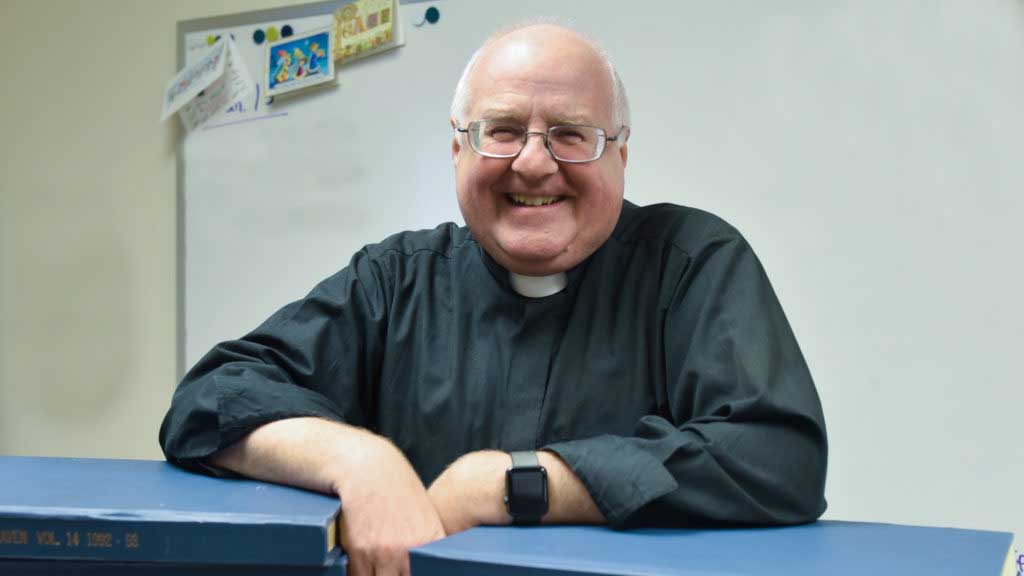
by Father Mark Goldasich
The sciences and I didn’t get along well in high school. In biology class, I was a wimp when it came to dissecting a frog, and taking care of the live rats in the classroom gave me the heebie-jeebies.
I fared no better in chemistry class as very few of my experiments ever worked. That was due to my tendency to not measure things exactly and my failure to master the intricacies of using a slide rule. (Do they even make those anymore?)
This presented a real problem when I went to college and knew that I had to take one science to graduate. Little did I suspect that the one I chose would not only fascinate me then, but continue to do so even to this day.
Our front page story this week about students from Corpus Christi School in Lawrence and their study of clouds rekindled some collegiate memories. Although I didn’t study meteorology, I did take astronomy as my science requirement.
That course opened a new vocabulary for me: black holes, pulsars, quasars, light-years, galaxy clusters, red giants and yellow dwarf stars (like the sun). I learned to gaze into the night sky and chart different constellations like Orion, Cassiopeia and Ursa Major (the Big Dipper). My mind was blown hearing that the Milky Way is composed of approximately 100 billion stars and that there are millions and millions of other galaxies as well.
When I lived in Kenya for a summer as a deacon, I was privileged each night to stare in awe at a magnificent night sky, free from any interference from city lights. Being south of the equator, I marveled at the Southern Cross constellation and Alpha Centauri, the third brightest star in the sky.
I bring this up because I think that many of us can relate to this story:
There was a man whose one consuming passion was to go to heaven. Finally, he died and did go there. An angel took him by the hand and showed him the beautiful sights — majestic mountains, lovely flowers, gorgeous sunsets, luminous night skies, little children playing in the streets.
The man exclaimed, “Wow, isn’t heaven beautiful?”
But the angel said, “This isn’t heaven. This is the world in which you lived but never saw.” (Story adapted from “Heaven,” found in Paul J. Wharton’s “Stories and Parables for Preachers and Teachers.”)
Every night, we have a miracle right over our heads. Don’t let this beauty go unnoticed.
We’ll be celebrating National Astronomy Day on May 18 this year. It began small with California astronomer Doug Berger in 1973. He set up telescopes on busy street corners, parks and malls to bring this science “to the people.” It has since spread globally.
There are several ways to celebrate this “holiday”:
• Gaze into the night sky using a telescope or high-powered binoculars.
• Visit an observatory such as Powell Observatory in Louisburg (www.askc.org).
• Attend an event at the Arvin Gottlieb Planetarium at Union Station in Kansas City, Missouri (planetarium.unionstation.org).
• Use an app — like SkyView®Lite, Star Tracker or Sky Safari — to help spot constellations, planets and stars.
Admiring this complex and spectacular created world should lead to a deeper faith in the loving Creator behind it all. May we pray with the psalmist:
“When I consider your heavens, the work of your fingers, the moon and the stars you have set in place, what is mankind that you are mindful of them, human beings that you care for them? You have made them a little lower than the angels and crowned them with glory and honor” (Ps 8:4-5).
Lord, as we marvel at this universe you’ve created, we award you a gold star!


